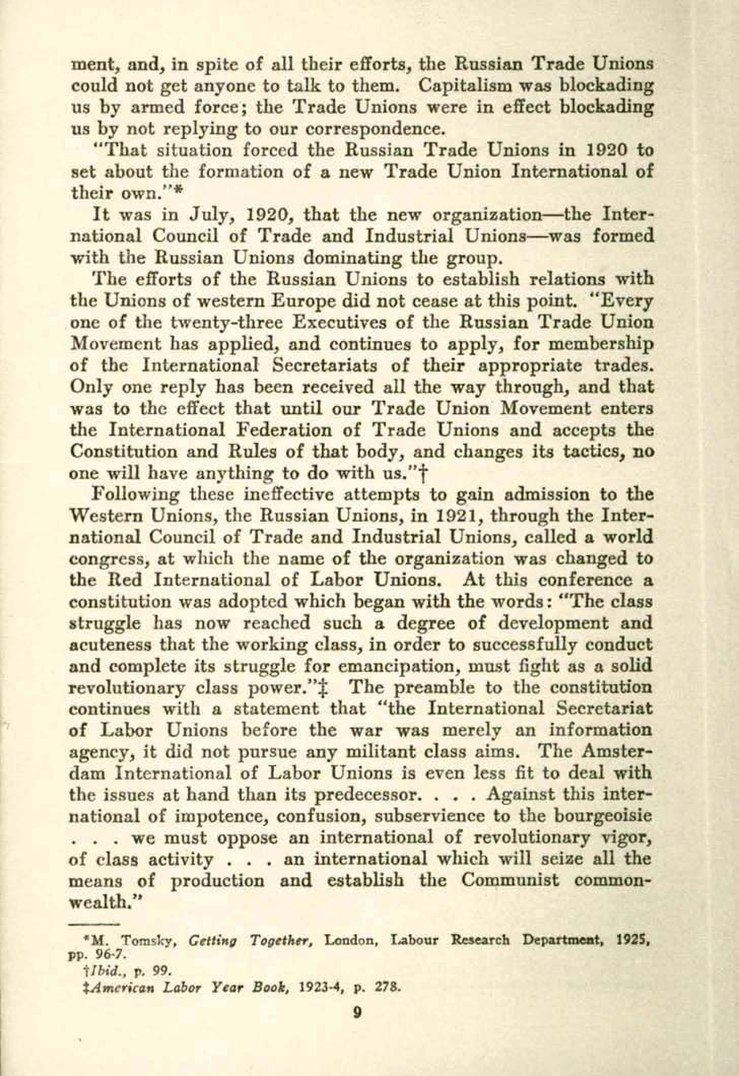ment, and, in spite of all their efforts, the Russian Trade Unions could not get anyone to talk to them. Capitalism was blockading us by armed force; the Trade Unions were in effect blockading us by not replying to our correspondence.
"That situation forced the Russian Trade Unions in 1920 to set about the formation of a new Trade Union International of their own."[1]
It was in July, 1920, that the new organization—the International Council of Trade and Industrial Unions—was formed with the Russian Unions dominating the group.
The efforts of the Russian Unions to establish relations with the Unions of western Europe did not cease at this point. "Every one of the twenty-three Executives of the Russian Trade Union Movement has applied, and continues to apply, for membership of the International Secretariats of their appropriate trades. Only one reply has been received all the way through, and that was to the effect that until our Trade Union Movement enters the International Federation of Trade Unions and accepts the Constitution and Rules of that body, and changes its tactics, no one will have anything to do with us."[2]
Following these ineffective attempts to gain admission to the Western Unions, the Russian Unions, in 1921, through the International Council of Trade and Industrial Unions, called a world congress, at which the name of the organization was changed to the Red International of Labor Unions. At this conference a constitution was adopted which began with the words: "The class struggle has now reached such a degree of development and acuteness that the working class, in order to successfully conduct and complete its struggle for emancipation, must fight as a solid revolutionary class power."[3] The preamble to the constitution continues with a statement that "the International Secretariat of Labor Unions before the war was merely an information agency, it did not pursue any militant class aims. The Amsterdam International of Labor Unions is even less fit to deal with the issues at hand than its predecessor. … Against this international of impotence, confusion, subservience to the bourgeoisie … we must oppose an international of revolutionary vigor, of class activity … an international which will seize all the means of production and establish the Communist commonwealth."
9
